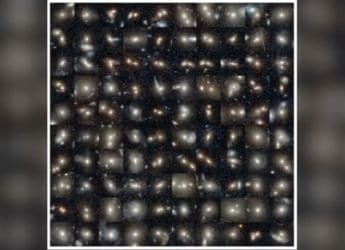- Home
- Science
- Science News
- Gravitational Waves Reveal Black Hole Ancestry Through Spin Analysis
Gravitational Waves Reveal Black Hole Ancestry Through Spin Analysis
Gravitational waves are unlocking the origins of black holes, linking spin shifts to sequential mergers in star clusters.

Photo Credit: NASA/Hubble Heritage Team
Galaxies like the Sombrero could reveal supermassive black hole mergers via gravitational waves.
Ripples in spacetime, known as gravitational waves, are being used to determine the ancestry of black holes. These waves, first theorised by Albert Einstein, are offering insights into how black holes form and evolve. Scientists have uncovered that the spin of a black hole can indicate whether it originated from repeated mergers in densely packed star clusters. This finding has the potential to transform our understanding of black hole formation and growth.
Study Links Black Hole Spin to Ancestry
According to a study published in Physical Review Letters, a team of researchers led by Fabio Antonini from Cardiff University's School of Physics and Astronomy examined 69 gravitational wave events. The findings suggest that when a black hole reaches a certain mass, its spin undergoes a shift. This change aligns with models that propose black holes grow through sequential mergers in star clusters.
As reported by Live Science, Isobel Romero-Shaw, a researcher at the University of Cambridge, stated that the study provides a data-driven method to identify a black hole's origin. The spin of high-mass black holes was found to be a strong indicator of their formation in regions where smaller black holes frequently collide and merge.
Gravitational Waves as Cosmic Identifiers
Gravitational waves are generated when massive objects, such as black holes, accelerate through space. The Laser Interferometer Gravitational-Wave Observatory (LIGO) and Virgo Observatory have detected multiple signals from black hole mergers since 2015, confirming Einstein's predictions. The study highlights that gravitational waves can be read like a cosmic birth certificate, revealing the formation history of black holes.
Thomas Callister, a researcher at the University of Chicago, mentioned that the results will aid in refining computer simulations of black hole formation. With upcoming observatories such as the Einstein Telescope and the Laser Interferometer Space Antenna (LISA), further discoveries are anticipated in the field of black hole research.
Get your daily dose of tech news, reviews, and insights, in under 80 characters on Gadgets 360 Turbo. Connect with fellow tech lovers on our Forum. Follow us on X, Facebook, WhatsApp, Threads and Google News for instant updates. Catch all the action on our YouTube channel.
Related Stories
- Samsung Galaxy Unpacked 2025
- ChatGPT
- Redmi Note 14 Pro+
- iPhone 16
- Apple Vision Pro
- Oneplus 12
- OnePlus Nord CE 3 Lite 5G
- iPhone 13
- Xiaomi 14 Pro
- Oppo Find N3
- Tecno Spark Go (2023)
- Realme V30
- Best Phones Under 25000
- Samsung Galaxy S24 Series
- Cryptocurrency
- iQoo 12
- Samsung Galaxy S24 Ultra
- Giottus
- Samsung Galaxy Z Flip 5
- Apple 'Scary Fast'
- Housefull 5
- GoPro Hero 12 Black Review
- Invincible Season 2
- JioGlass
- HD Ready TV
- Laptop Under 50000
- Smartwatch Under 10000
- Latest Mobile Phones
- Compare Phones
- Redmi Note 15 5G
- Redmi Note 15 Pro 5G
- Redmi Note 15 Pro+ 5G
- Lava Play Max
- Poco C85 5G
- Honor Magic 8 Lite
- Jolla Phone
- Realme P4x 5G
- Asus ProArt P16
- MacBook Pro 14-inch (M5, 2025)
- OnePlus Pad Go 2
- Poco Pad M1
- Just Corseca Skywatch Pro
- Honor Watch X5
- Acerpure Nitro Z Series 100-inch QLED TV
- Samsung 43 Inch LED Ultra HD (4K) Smart TV (UA43UE81AFULXL)
- Asus ROG Ally
- Nintendo Switch Lite
- Haier 1.6 Ton 5 Star Inverter Split AC (HSU19G-MZAID5BN-INV)
- Haier 1.6 Ton 5 Star Inverter Split AC (HSU19G-MZAIM5BN-INV)

















